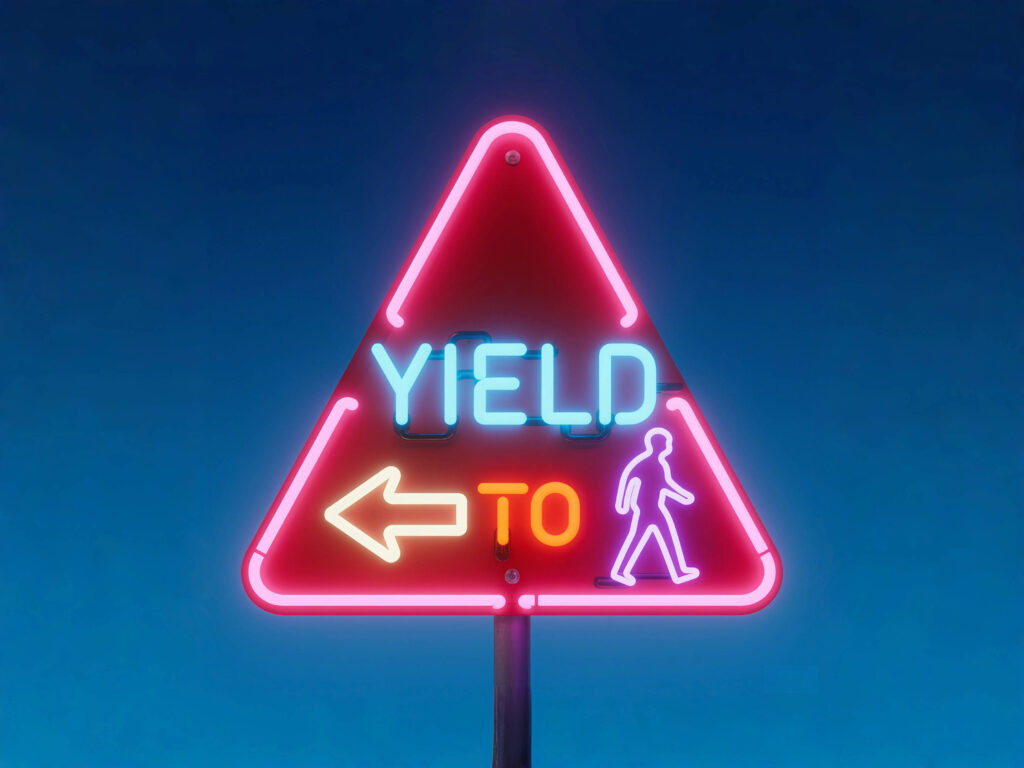What does yield mean in driving If you’ve ever seen a yield sign while driving, you might have wondered what it really means. In simple terms, to “yield” means to give way to other drivers or vehicles, letting them go first before you proceed. It’s a road rule that helps drivers share the road safely, especially when they’re merging or approaching intersections.
When you see a yield sign, you need to be prepared to slow down or stop if necessary. It’s different from a stop sign, which requires a full stop no matter what. Understanding what yield means in driving can help you avoid accidents and stay safe on the road.
Table of Contents
What Does Yield Mean in Driving The Basics You Should Know
When you’re driving and you see a yield sign, it’s important to know what it means. Simply put, a yield sign tells you to let other drivers go first. This helps keep traffic moving smoothly and reduces the risk of accidents. Yielding doesn’t always mean stopping, but it means you must be ready to slow down or stop if needed.
In driving yandex games, yielding is all about giving way to others when it’s necessary. For example, if you’re at an intersection and there’s traffic coming from another road, you must let them go ahead before you proceed. This keeps everyone safe and ensures that traffic flows well without unnecessary stops.
Yield signs are commonly found at intersections, roundabouts, and merging lanes. They are different from stop signs because they don’t require a full stop unless there’s traffic coming. It’s a simple rule, but it helps prevent confusion and accidents when many cars are on the road.
How Yield Signs Keep Traffic Flowing Safely
Yield signs are crucial for keeping traffic flowing safely and smoothly. The main job of a yield sign is to ensure that drivers are aware of other vehicles on the road. When you yield, you’re allowing other drivers to go before you, which helps avoid collisions at busy intersections or lanes that merge.
By yielding, you also prevent unnecessary stopping, which can cause traffic to back up. If everyone followed the yield rule correctly, there would be less congestion, and everyone would be able to travel more efficiently. For instance, when entering a highway or a roundabout, yielding helps drivers merge without any sudden stops.
Without yield signs, traffic would be much more chaotic. Drivers wouldn’t know when to slow down or stop, which could lead to confusion and accidents. Yield signs give clear instructions and help keep everyone safe. If you know when and how to yield, you can drive more confidently and responsibly.
Clear road signs can prevent accidents. Neon Signs have unparalleled visibility, which can greatly reduce the chance of traffic accidents, especially at night.
These neon signs are durable and eye-catching, ensuring your message is clearly visible day or night. You can customize them to a variety of safe driving slogans, perfect for use as safety reminders, warnings, or directions.
The right neon sign can increase awareness and prevent danger in any environment. Safety starts with clarity – make your sign memorable.

What Happens When You Don’t Yield in Driving
Ignoring the yield sign or not yielding properly can lead to dangerous situations. When you don’t yield, you risk causing a car accident. For example, if you don’t let a car go first at an intersection when required, you could crash into them. Yielding is about safety, so when it’s ignored, it can create problems for everyone on the road.
If you don’t yield, the driver you’re supposed to let go first may have to slam on their brakes to avoid a collision. This could result in a chain reaction of crashes, especially in busy traffic. This can cause serious accidents and injuries, which is why it’s important to follow the rule.
In some places, failing to yield can even result in a traffic ticket or fine. Authorities take yielding seriously because it plays a big part in preventing accidents. So, it’s important to always follow the yield sign’s instructions and be aware of other cars on the road.
Yield vs. Stop Signs: What’s the Difference in Driving
When you’re driving, both yield signs and stop signs are important for controlling traffic. But what does yield mean in driving, and how is it different from a stop sign? The main difference is that with a stop sign, you must come to a complete stop, no matter what. After stopping, you check for any vehicles or pedestrians before proceeding.
On the other hand, a yield sign doesn’t require a full stop. Instead, it asks you to slow down and give way to other vehicles that have the right of way. You only stop if necessary. If the road is clear and no other cars are coming, you can continue without stopping.
In short, yield signs help drivers merge and move forward without causing delays, while stop signs demand complete stops to ensure safety. Knowing when to yield or stop can help you drive safely and avoid accidents. Understanding these rules will make you a more confident and responsible driver.
Why Understanding What Yield Means in Driving Is Important for Road Safety
Understanding what yield means in driving is key to keeping yourself and others safe on the road. When you yield correctly, you reduce the chances of accidents and keep traffic flowing smoothly. Yield signs are placed in areas where drivers need to be extra careful, such as intersections, roundabouts, and areas where traffic is merging.
If everyone understood the importance of yielding and followed the rule, there would be fewer accidents and less congestion. For example, yielding at a roundabout helps prevent crashes and allows cars to enter the circle without waiting for long periods. This not only makes driving easier but also keeps the roads safer for everyone.
When you know how to yield, you can also react faster to other drivers’ actions. This is important in situations where you might need to stop or slow down quickly to avoid a dangerous situation. Yielding is one of the simple but crucial rules that helps keep traffic organized and everyone safe.
Tips for Yielding Correctly
Always Be Ready to Stop: Even though a yield sign doesn’t require a full stop, be prepared to stop if there’s traffic coming.
Watch for Pedestrians: Don’t forget to check for pedestrians when yielding, especially at intersections.
Signal Your Intentions: Use your turn signals to let other drivers know what you’re planning to do when you approach a yield sign.
Stay Calm and Patient: Yielding can sometimes mean waiting for a few moments, but it’s important to stay calm and patient for safety’s sake.
Common Misunderstandings About Yielding in Driving
Many drivers still don’t fully understand what yield means in driving. Some people think that they can ignore yield signs or only slow down when there’s heavy traffic. However, this isn’t the case. Yield signs are there to prevent accidents and ensure that everyone on the road knows when to give way.
A common misunderstanding is that you don’t need to yield if no cars are coming. While it’s true that you don’t always have to stop, you should still slow down and be prepared to stop if something changes. For example, if a pedestrian crosses the road or another car suddenly appears, being ready to yield can help prevent a collision.
Another confusion is when drivers don’t yield to cars merging into their lane. If another vehicle is trying to enter your lane, you must let them go ahead, especially if they have the right of way. Failing to yield in these situations can create dangerous driving conditions and disrupt the flow of traffic.
By knowing exactly what yield means in driving and following the rules, you contribute to safer roads for everyone. Keep an eye on your surroundings at all times and be ready to yield when necessary.
Conclusion
In conclusion, understanding what yield means in driving is important for keeping everyone safe on the road. Yield signs are simple but essential in helping drivers know when to let others go first. By following this rule, you can avoid accidents and help traffic flow smoothly. So, the next time you see a yield sign, remember to slow down, check for other vehicles, and be ready to stop if needed.
Being aware of when to yield and how to yield is a big part of being a responsible driver. It might seem like a small thing, but it makes a huge difference in preventing accidents. Whether you’re driving through a roundabout, merging onto a highway, or approaching an intersection, yielding helps keep the road safer for everyone. So always pay attention to yield signs and drive carefully!
FAQs
Q: What does a yield sign mean in driving?
A: A yield sign means you must slow down or stop if needed to let other vehicles go first before you proceed.
Q: Do I always have to stop at a yield sign?
A: No, you only need to stop if there’s other traffic or if it’s necessary for safety. Otherwise, you can continue slowly.
Q: Can I ignore a yield sign if there are no cars around?
A: No, you should always slow down and be prepared to stop, even if the road looks clear.
Q: Is a yield sign the same as a stop sign?
A: No, a stop sign requires you to come to a complete stop, while a yield sign only asks you to slow down and give way to others.
Q: What happens if I don’t yield at a yield sign?
A: If you don’t yield, you could cause an accident or get a traffic ticket. Yielding keeps the road safe for everyone.



